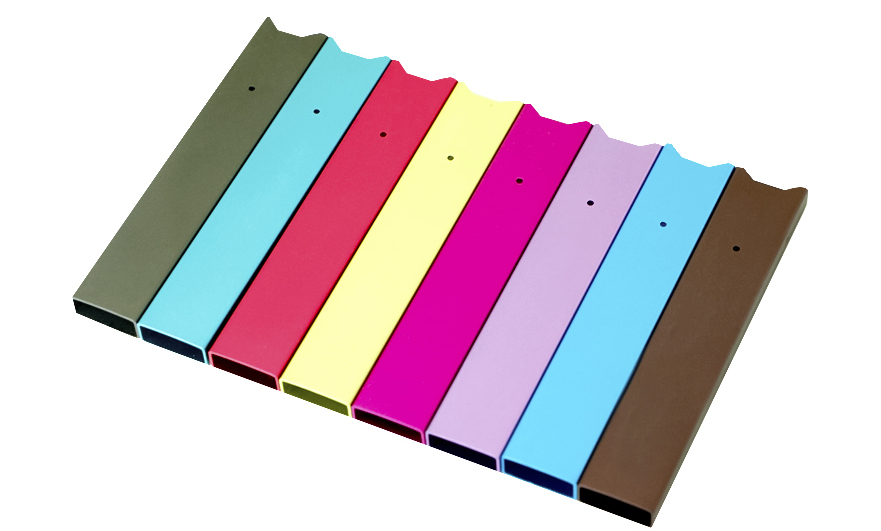15 years one-stop China custom CNC machining parts factory

Hey there I’m VMT Sam!
With 25 years of CNC machining experience we are committed to helping clients overcome 10000 complex part-processing challenges all to contribute to a better life through intelligent manufacturing. Contact us now
 171 |
Published by VMT at Nov 26 2021
171 |
Published by VMT at Nov 26 2021
After CNC machining service, there will always be a little machining trace on the surface of CNC machined parts. In order to enhance the texture and beauty of the parts, surface finishes will be carried out. Please note that whether to do surface finishes or not depends on the customer's product performance and needs.
CNC machining surface finishes process and grade are different. For example: anodizing, polishing, sandblasting and powder coating treatment. Let us discuss them one by one.
Surface finish? Surface texture? Surface topology? Surface roughness? What does all this mean? Let's check. Talking about surface finishess can be tricky and often leads to confusion. In order to make it easier for product developers and engineers to understand surface finishes and how to communicate with them, we will first define some terms around this topic.
What is surface roughness? The surface roughness is generally formed by the CNC machining method used and other factors, such as the friction between the tool and the surface of the part during the CNC machining, the plastic deformation of the surface layer metal when the chips are separated, and the high-frequency vibration in the process system. . Due to the difference between the numerical control processing method and the workpiece material, the depth, density, shape and texture of the traces left on the processed surface are different.
Secondly, secondary surface finishess are produced in the process of CNC milling, turning, grinding, polishing, grinding or polishing. Each of these processes will transfer its unique finish to the surface of the CNC machined part, leaving a different kind of fingerprint on the part. CNC machining surface finishes process and grade are different. For example, various chemical passivation techniques, such as anodizing or zinc plating; chrome or nickel plating; or decorative surface coatings, such as paint or powder coating. Surface finishes can also be transferred from one part to another, for example when the machined core of an injection mold tool transfers the tool mark to the inside of the molded plastic part. The surface finish of the plastic part looks like it has been processed, but it is not.

Different types of CNC machining surface finishes
1. Standard finishing (ie milling)
Standard finishing is called standard surface for a reason. This is because this is the exact way you get it from the CNC machine. Its roughness is about 125 uin and some minor tool marks. Although some metal surfaces can do this, some may require further smoothing.
2. Sandblasting
Sandblasting, also known as shot blasting and sanding, is a destructive processing method for the surface of the material. It uses fine abrasive sand particles to impact the surface of the material, causing the surface to produce granular depressions to form a foggy surface. Or corrode the surface, and achieve the effects of removing gold and rust, deburring, deoxidizing layer, stress treatment, friction coefficient adjustment, precision adjustment, high adhesion, beautification, fogging, matting, and improving the surface finish of CNC machined parts.
3. Powder coating
The powder coating process is to coat a thin layer of dry polymer powder on the CNC machined parts. This method improves the strength and wear resistance of CNC machining parts. CNC machining manufacturers apply different levels of powder coating on the parts to increase stability. However, this may affect the dimensional tolerances of CNC machined parts.
4. Anodizing
As a post-processing program, anodizing adds a very thin ceramic layer to the surface of the CNC machined parts to be processed. This process has corrosion resistance and wear resistance. The anode coating applied during the electrochemical post-treatment process is also non-conductive. This means that during the anodization process, if electrical conductivity is required, the elements of the CNC machined parts must be masked.
There are two main types of anodizing used for custom CNC machined parts. The first is anodized type II. Here, you have a standard anodizing process. It helps to produce uniform and anti-rust paint. With this type, you can dye your parts in several different colors. Manufacturers often call it "decorative anodizing."
Do you know how to choose a suitable surface finishes method for CNC machined parts?
As mentioned earlier, not every surface finishes is suitable for every metal material. Below is a short guide to choosing the right surface finishes.
1. Understand the measurement method of surface finishes of CNC machined parts
2. Choose the right feed and speed
3. Maintain the rigidity of the tool by reducing deflection and flutter.
4. Use chip breakers
5. Reduce exhaustion
6. Vibration reduction
7. Use a frontal, sharp insert, and leading angle.
8. Avoid using the same finishing and roughing tools.
9. Never cut the center line
10. Avoid residence and pause.
In conclusion
When you know how to apply surface finishes, CNC machining services will make more sense. If you have project requirements for CNC machining parts, VMT can discuss with you and develop the best one-stop service for CNC machining.
Ready To Start Your Next Project?
Get Instant Quote

Request a Free Quote
Send us a message if you have any questions or request a quote. We will get back to you ASAP!